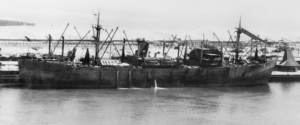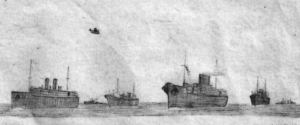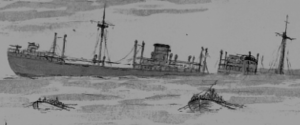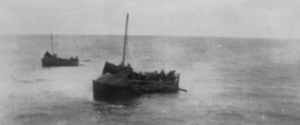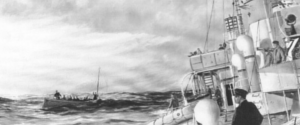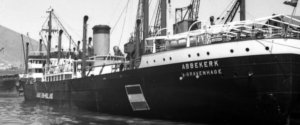
After Bunbury and Abadan (where I spent one evening ashore) then to Durban (no shore leave at all) and now to Trinidad. Join the Navy and see the world you would think. The weeks became months with always the same faces to talk to. I must say there was never an unseemly word between us. I still wonder today what we talked about. After so much time there would appear to be nothing left to talk about. Anyway, there it was, and for now there was the wide horizon beckoning us again.
One day after departure we again slipped into our work routine. Even the main engines sounded as if they had never stopped. We passed Capetown and started on the long crossing. We had already noticed that the growth on the hull of small shells and weed below the water-line had started to be felt. The long period in tropical waters had speeded up this growth. One could say that the ship had developed a ‘full beard’.
During peacetime the ship would have gone into dry-dock and have this growth removed. The speed with the same fuel consumption was considerably less. In peacetime our trips were never longer than four months after which the ship went straight into dry-dock for repairs and a scrubbing. During wartime one can’t afford to lose even half a mile of speed. The German U-boat designers did not sit still and the latest boats were sailing at more than our seventeen knots per hour. We could only achieve our top speed with a clean bottom. Luckily we arrived safely in Trinidad without any mishaps.
Trinidad is an island where they grow and refine a lot of sugarcane and another important by product: RUM ! From this they distilled a number of other products like hairlotion, which was bottled in little beer bottles. It was volatile stuff and I always had a bottle handy.
Tar wells up out of the ground and with little trouble it is picked up and exported. Our ship was totally loaded with sugar. While this was happening and if we had the time and inclination we went ashore for a drink or to the cinema to take in a movie.
The empty ship took an astonishing amount of sugar in all its five holds, absolutely full to the top deck. I know the Captain had been in touch with the shipyards in Curacao to find out if his ship could go into dry-dock for a good scrub. The answer was negative because of lack of space. Of course this was a big disappointment.
The ship, fully loaded, was now floating a metre deeper in the water and this again reduced the speed significantly. Yet we were considered as if we were as fast as before, because we received orders that we had to sail by ourselves, without any protection, to England.
We left the harbour of Port of Spain in Trinidad on 15th August 1942.
<< previous chapter ———————————————————————-next chapter >>

